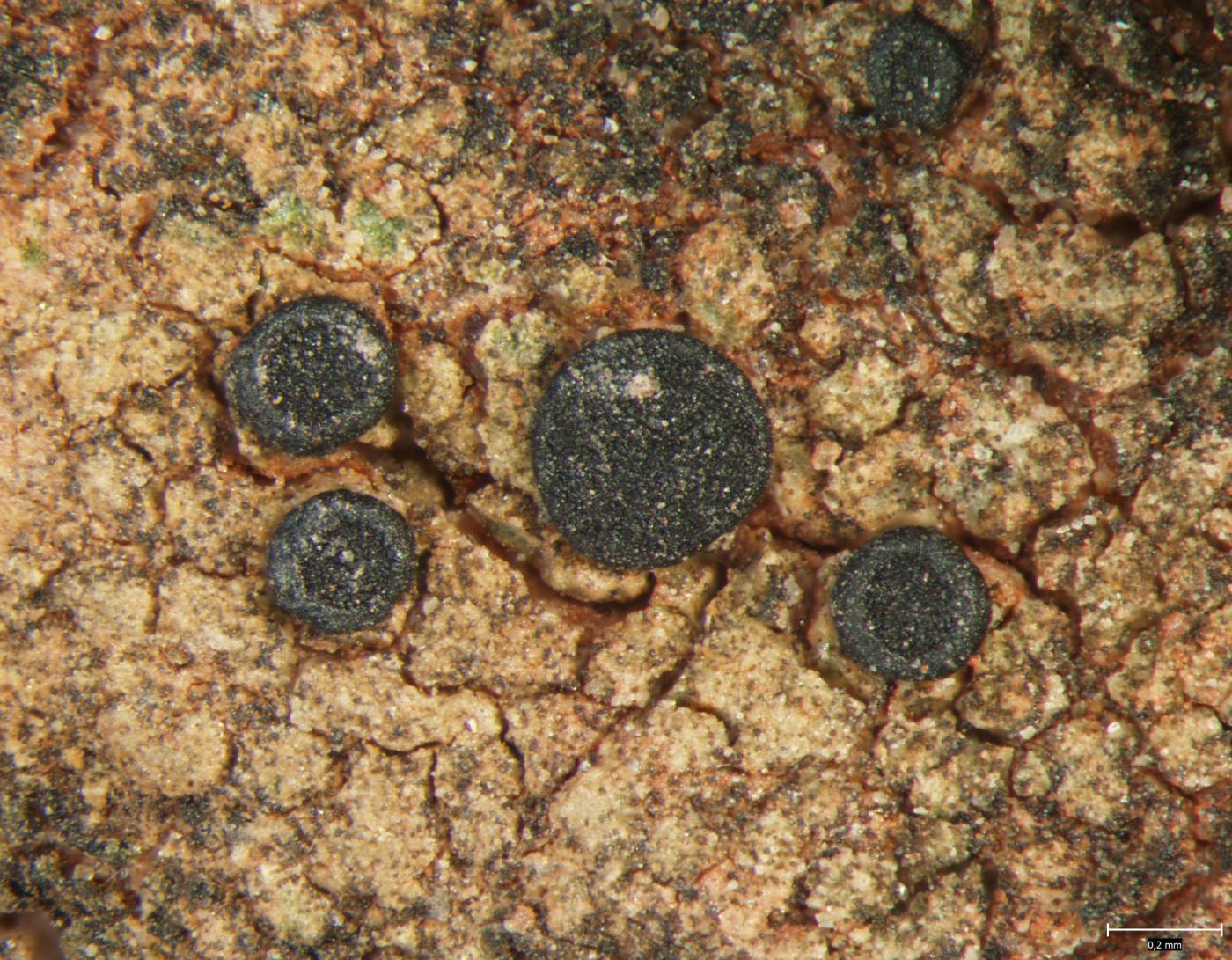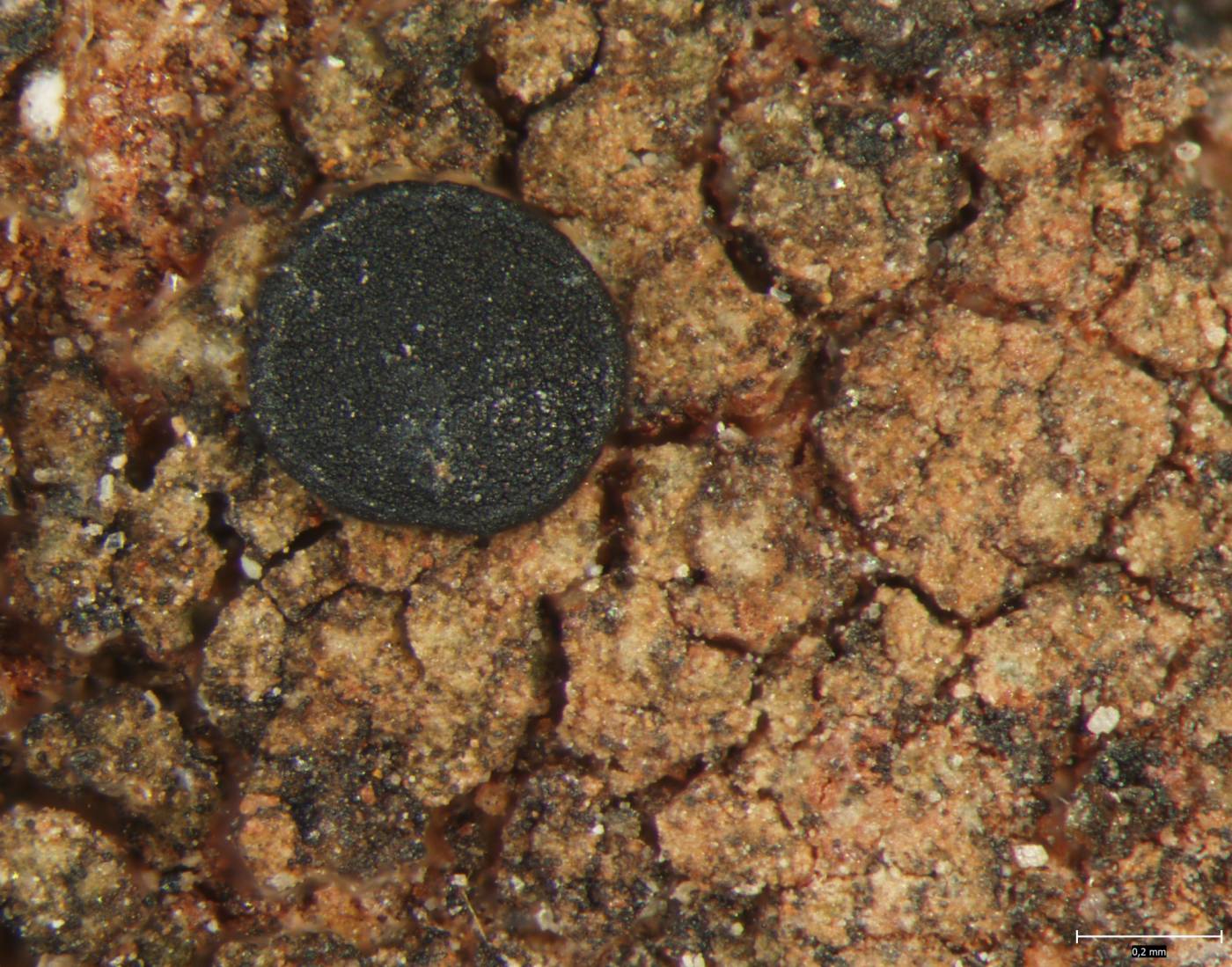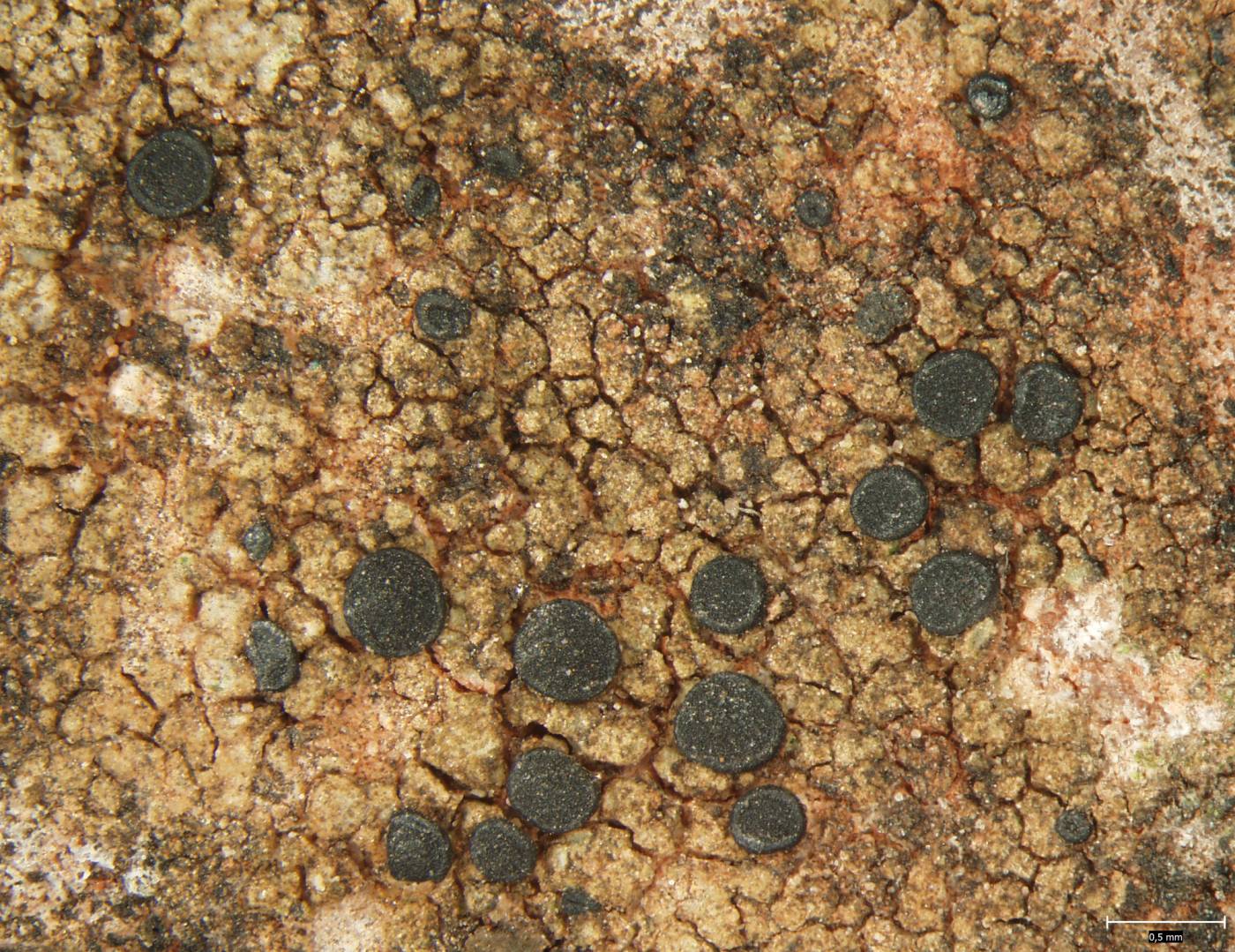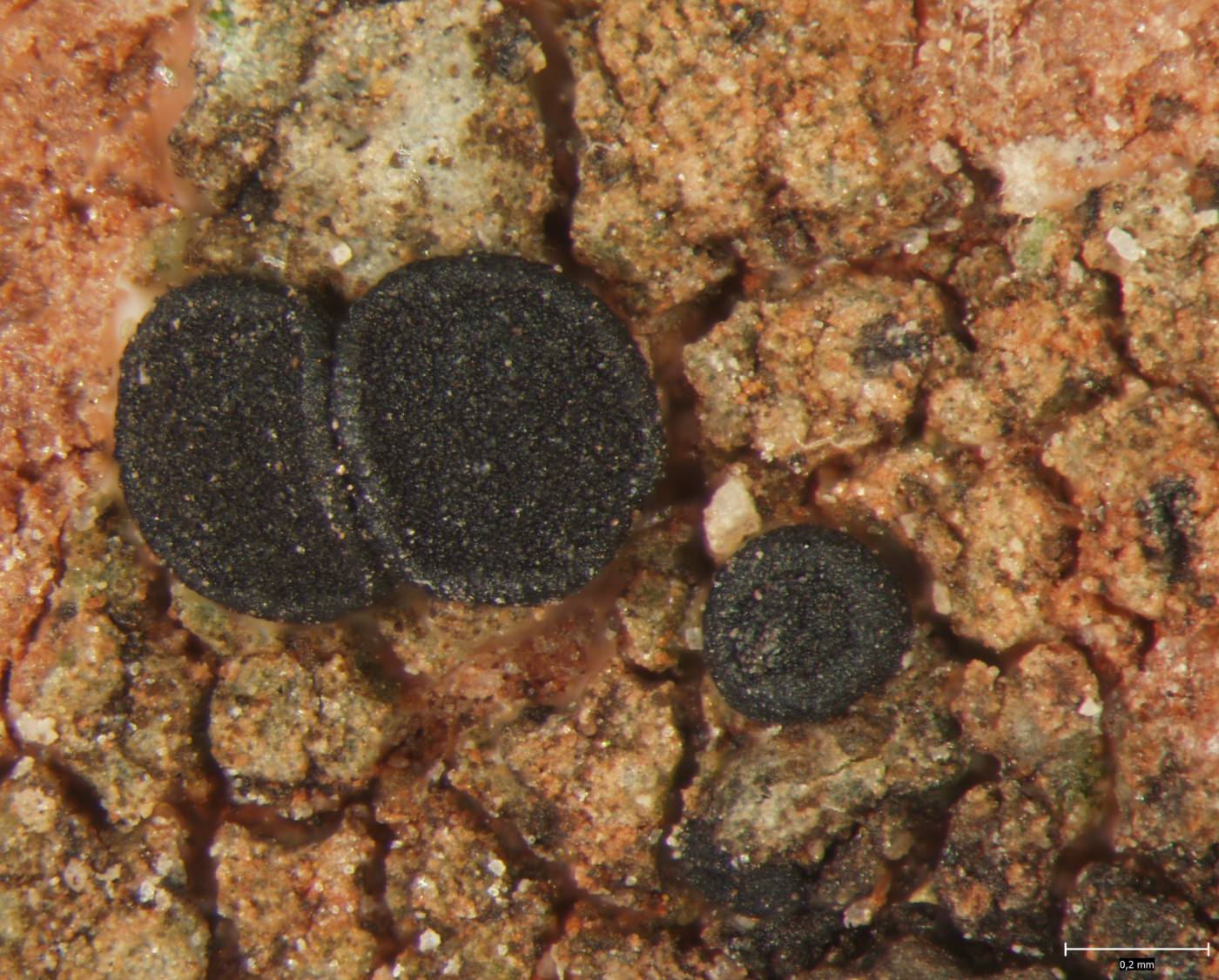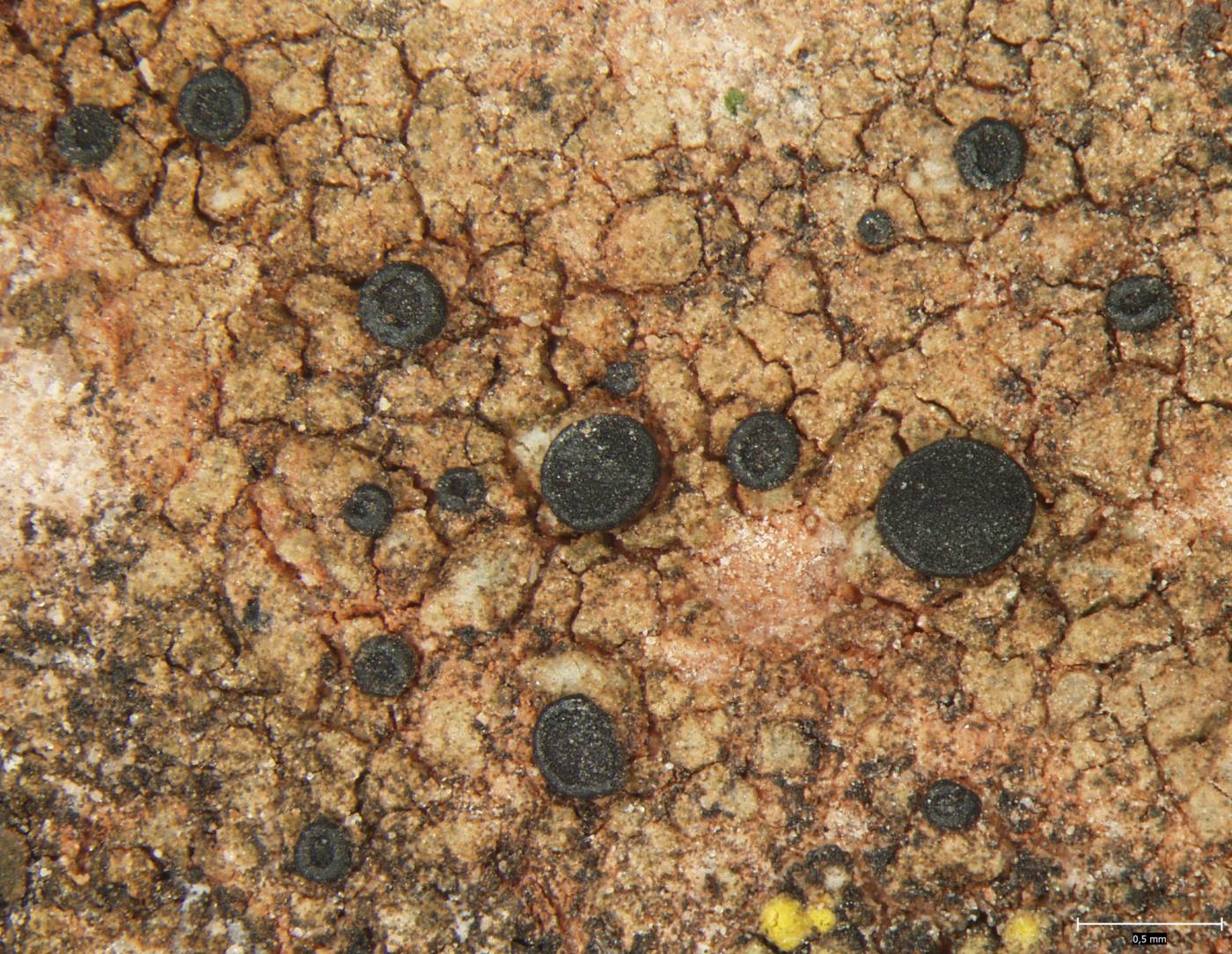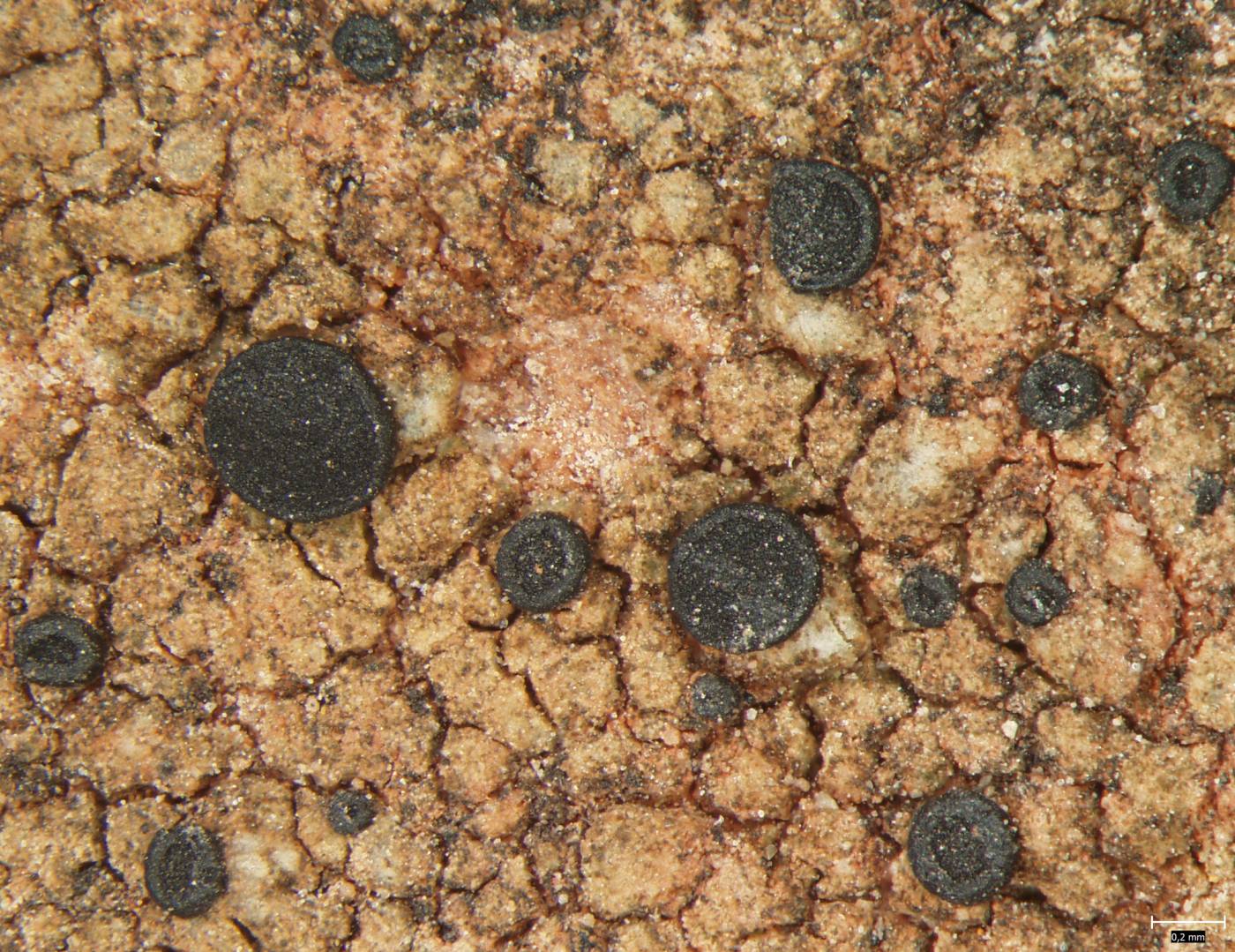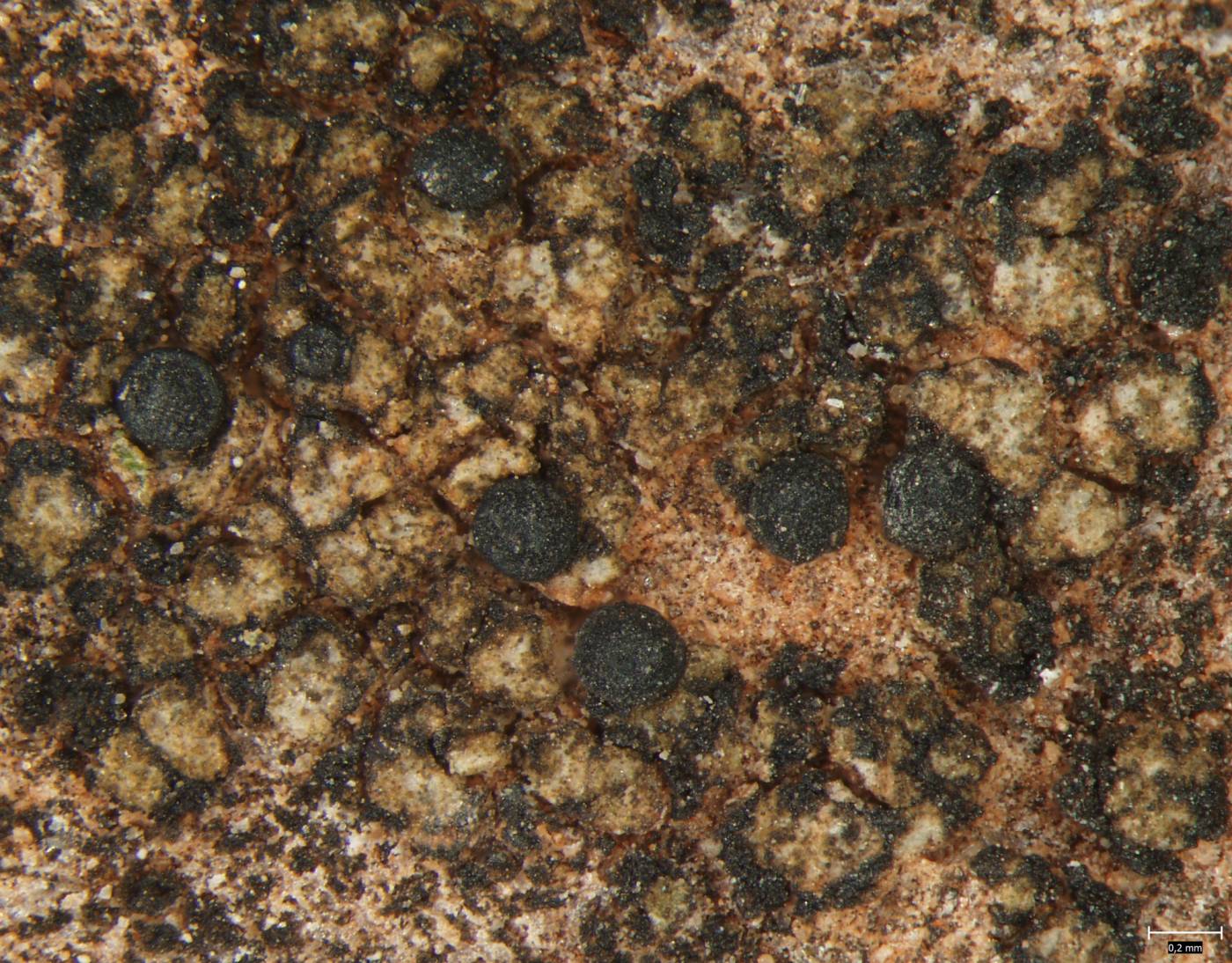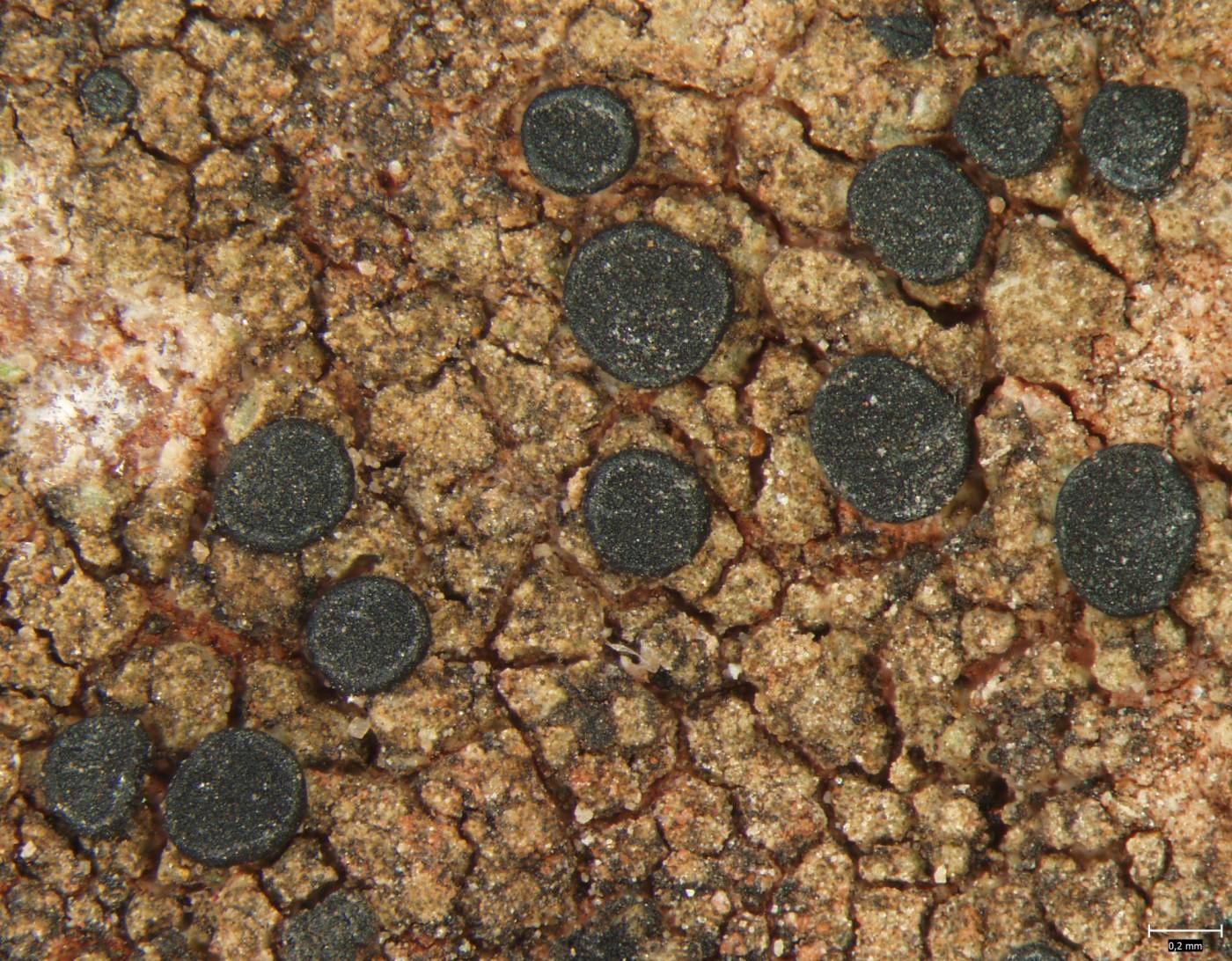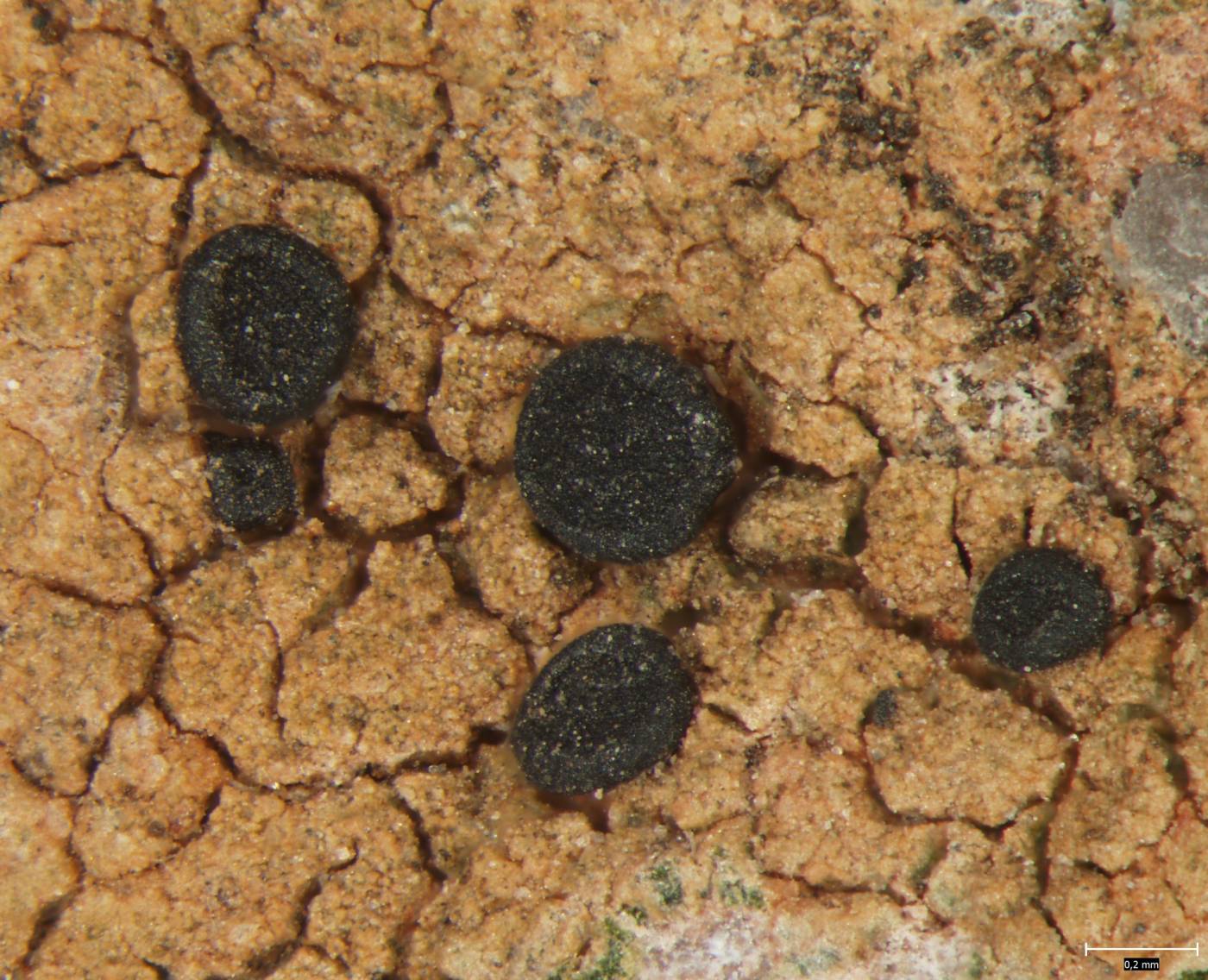A crustose microlichen resembling species of Lecidella in its habitus and Catillaria microscopically. Thallus is cracked to areolate, pale ochre brown to grey brown, sometimes also rusty, not pruinose. Its black lecideine apothecia are conspicuously dark on the cross-section due to densely pigmented hypothecium and contain one-septate, relatively wide ellipsoid spores.
It grows on calcareous rocks, mainly on limestone, from lowlands to mountains and prefers continental areas. The species is rare in the Czech Republic, only recorded on calcareous outcrops of Barrandien in south-western part of Prague (Servít 1910, 1930) where it has also been recently confirmed (Malíček et al. 2014).
Literature: Servít M. (1910): Zur Flechtenflora Böhmens und Mährens. – Hedwigia 50: 51–85. Servít M. (1930): Flechten aus der Čechoslovakei. I. Die Umgebung von Praha. – Věstník Královské České Společnosti Nauk, 1929/13: 1–50. Malíček J., Palice Z. & Vondrák J. (2014): New lichen records and rediscoveries from the Czech Republic and Slovakia. – Herzogia 27: 257–284.
taxonomic classification:Ascomycota → Lecanoromycetes → Lecanorales → Ramalinaceae → Kiliasia
most frequented synonyms:Catillaria subgrisea, Toninia philippeaRed List (Liška & Palice 2010):RE – extinct
Red List (Malíček 2023):C1 – critically endangered
Occurrence in the Czech Republic
All records: 1, confirmed 1. One click on a selected square displays particular record(s), including their source(s).
